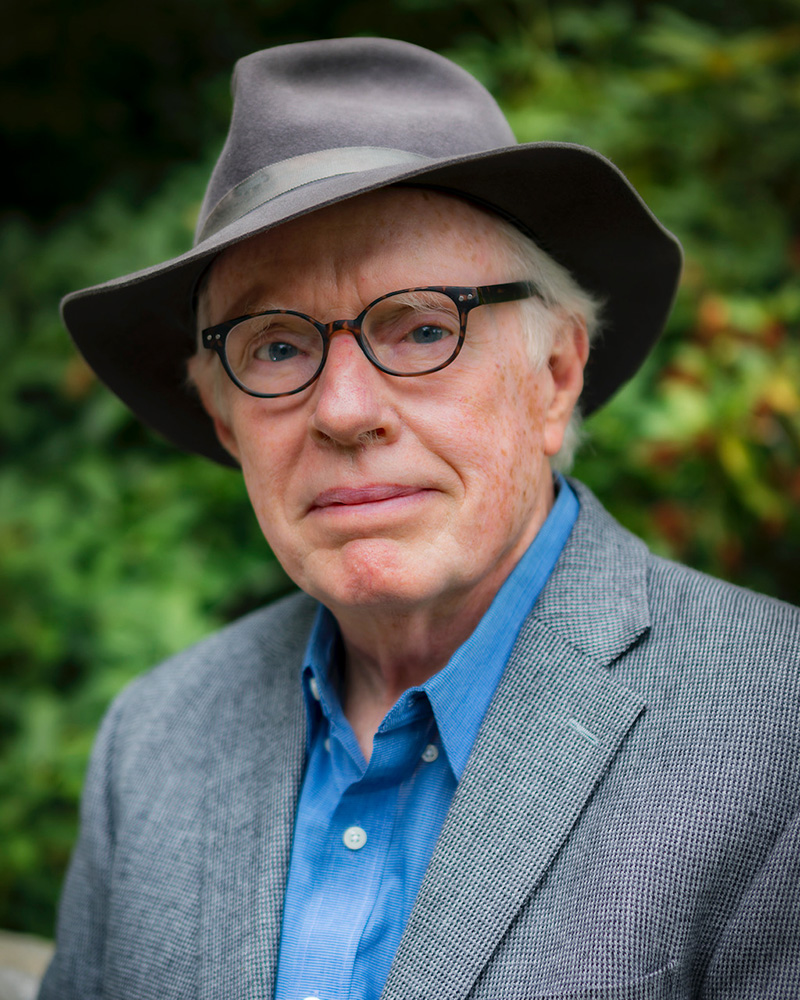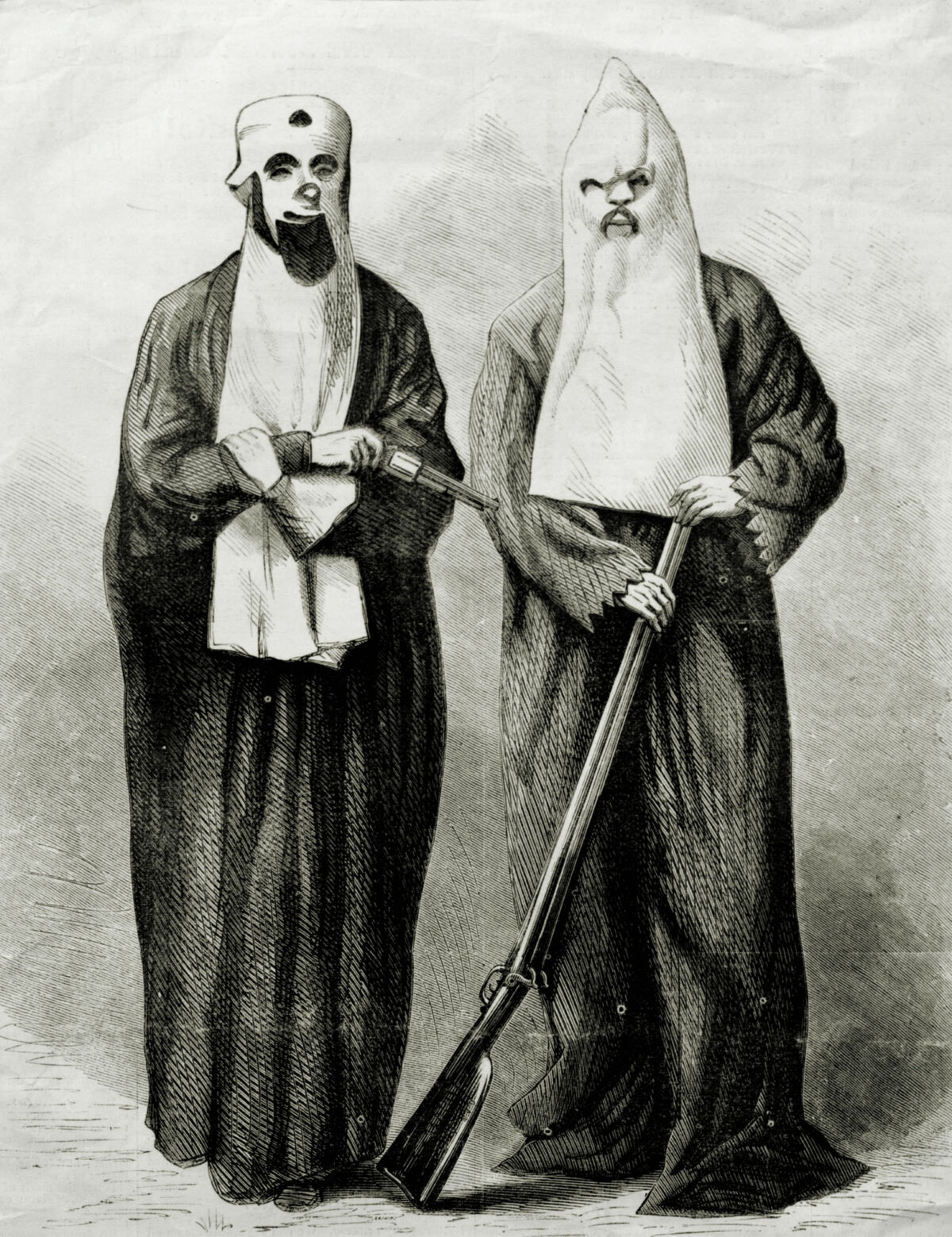They came for Wyatt Outlaw in the dark of night. Burning torches lit their white robes and hoods, masking their identities but illuminating the evil intentions in their hearts. They snatched Outlaw from his home in front of his family, dragged him down Main Street in Graham, N.C., mutilated his body, and hanged him from a tree in the courthouse square. His “crime” was being a Black man active in the Union League and holding public office in Alamance County. His death was recorded as “misadventure” at the hands of persons unknown.

Depredations like this and worse occurred by the thousands throughout the violent South against newly freed African Americans in the years after the Civil War, perpetrated by White supremacist groups collectively known as the Ku Klux Klan. In Klan War: Ulysses S. Grant and the Battle to Save Reconstruction (Knopf, 2023), Fergus M. Bordewich chronicle this devastating chapter in American history and the determined efforts by President Ulysses Grant to break the violent grip of the Klan during Reconstruction. Hard-won legislation, championed by Grant, and the dedicated efforts of resilient federal judges and juries backed by the gleam of Union Army bayonets broke the power of the Klan. But unlike Grant’s Civil War campaigns, the victory was not decisive. The seeds of domestic terrorism cultivated after the war have periodically found fertile ground in American society during times of social and political turbulence. Bordewich’s book is excellent history and a timely warning.
Why did you decide to do a book about Grant’s war against the Klan?
“Klan War” evolved naturally from several of my previous books in which I wrote about the significance of slavery and race in the Early Republic, the development of the Underground Railroad, the Compromise of 1850, and most recently in the Civil War, in “Congress at War.” I wanted to show what homegrown American terrorism looked like, how it was defeated by Grant, and what its consequences were.
Much ink has been spilled about the supposed failures of Ulysses S. Grant’s presidential administrations. Should the efficacy of his presidency be reevaluated in light of his war against the Klan?
Definitely, it should. Grant’s deep personal commitment to the extension of full citizenship and human rights to Black Americans made his one of the most ambitious and consequential presidencies in our history. Overall, his presidency was mixed: as is well known, some members of his administration were corrupt, his efforts to acquire Santo Domingo did not succeed, and his enlightened Indian policy did not ultimately prevail. But after Reconstruction, his reputation was ruthlessly destroyed both by resurgent advocates of the Lost Cause and their Democratic allies, who disdained him precisely because of his commitment to Black civil rights and Reconstruction.
How important was Nathan Bedford Forrest in the formation, organization, and spread of the Ku Klux Klan?
Forrest was a wealthy prewar slave-dealer and a war criminal as well as a talented cavalry commander. But he was not the founder of the Klan. He was recruited by its early organizers to serve as its first “Grand Wizard.” Traveling around the South, he served as a sort of reactionary Johnny Appleseed: wherever he went, new Klan “dens” sprang up behind him, and violence soon followed. Most probably, he also encouraged the Klan to develop the guerilla cavalry tactics that were its trademark. Of course, those tactic were used not against soldiers but against unarmed, helpless, and isolated freed people and white Republicans.
How does Grant’s war against the Klan equate to a battle to save Reconstruction?
Without Grant’s decisiveness, both military and legal, the Klan would have continued to overwhelm the embryonic two-party system in the former Confederate states. The Klan’s political goal was to destroy biracial democracy in the South; Grant’s was to protect it. When the Klan was finally faced by federal soldiers instead of hapless civilians, it caved.
Most people associate Klan depredations being inflicted against poor, rural, uneducated Blacks. You argue that the opposite is true. Explain.
Many rural freed people were certainly victims of the Klan. But the Klan’s primary target was the new class of (mostly) once-enslaved men who rose to positions of local and later county and statewide political leadership. Their “ignorance” is a racist trope. Many were at least as well educated as their white neighbors. Some had university educations. White Republicans were also targets of the Klan. The last thing that southern reactionaries wanted to see was viable biracial government in which Blacks exhibited equal or even superior talent to white men.
What was it about the Klan that attracted prominent White community leaders to its ranks?
There’s a common idea that the Klan was made up of hoodlums, louts, and thugs. Such men did join the Klan, along with poor white farmers and other workingmen. But it was founded and almost everywhere led by the so-called “better class” of men in their communities, commonly former Confederate officers, landowners, lawyers, doctors, even journalists and ministers. Such men saw themselves as the “natural” leaders in their communities. Their stated goal was to permanently enshrine white supremacy, a term which Klan members proudly embraced.
You argue that by 1872 the organized Klan was in retreat. Why wasn’t its defeat decisive?
Once Grant broke the Klan as an organized movement, northern interest in the South’s problems rapidly waned. Especially after 1874, funding for both occupation troops and federal prosecutors shriveled, as white supremacist “redeemers” steadily recaptured state governments. With reactionary Democrats in control, terrorism was no longer necessary to subvert the rights of the freed people. That would now be done mainly by political means.
Who were the front-line heroes in Grant’s war against the Klan?
While many federal soldiers and law officers struggled heroically against the Klan, two stand out. Major Lewis Merrill of the 7th Cavalry led the crackdown on the most Klan-infested counties of South Carolina. A West Point graduate with legal training and a sterling record hunting down Confederate guerrillas in Missouri during the Civil War, he was the perfect man for the job. Keeping the Klan on the run with his veteran troops and penetrating it with spies, he secured thousands of arrests. On the legal side, Grant’s attorney general, Amos Akerman, a passionately committed Georgia Republican, brought immense energy to the prosecution of the Klan.
You warn that the Klan bequeathed to America a model for using terrorism as a means of social control. Are we hearing echoes of the 1870s in our current social and political discourse?
My book is one of history, not present-day politics. But a few conclusions are inescapable. The United States is not so exceptional that it is somehow absolved from the potential for organized terrorist violence of the type we have seen in other countries. The story of Reconstruction and the Klan war further demonstrates that rights that we take for granted—as freedmen did in the 1870s—can be taken away again. There are forces in today’s America that have the potential to undermine our most basic democratic processes and institutions, as we saw on January 6, 2021. We must remain vigilant if we are not to let our democracy slip through our fingers.






